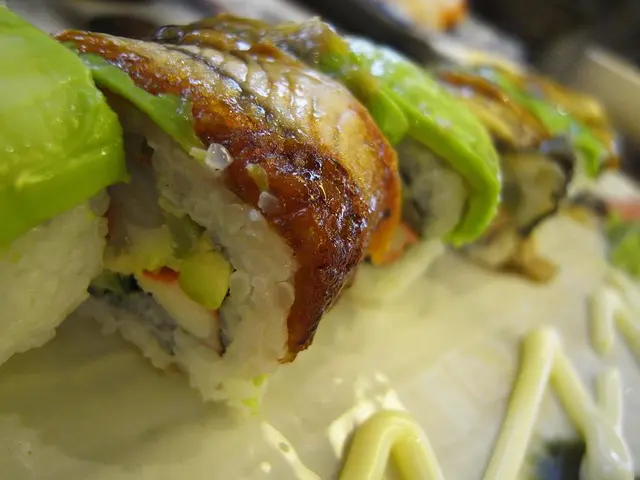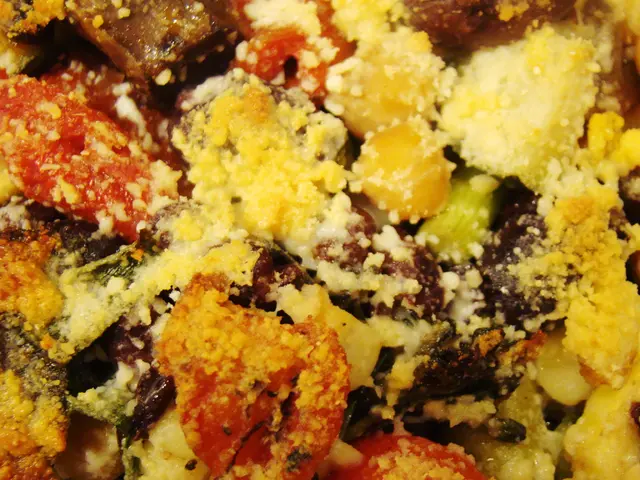Open-Book Tips for Peeling Boiled Eggs Like a Boss
Method for Removing Shells from Boiled Eggs
Who wants a messy, frustrating egg-peeling experience every morning? Not us! Scientists have cracked the code on easy peelabilities. Here's an uncensored guide to turn your next breakfast into a breeze.
Boiled eggs, whether soft or hard, become a staple for many at the break of dawn. However, the ensuing battle with stubborn shells can be a real buzzkill. But it doesn't have to be. There are scientifically-backed strategies to conquer this morning conundrum. Let's cut the crap and get down to business.
The Nuts and Bolts of Egg Anatomy
An egg consists of a hard, porous shell, an inner and outer membrane, gooey egg white (albumen), and a yolk surrounded by another membrane smack dab in the middle. There's also an air chamber between the shell and membrane at the wider end of the egg.
In the late '60s and '70s, researchers dug deep into the peelability of eggs post-cooking. One study from 1969 showed that the pH of the egg white plays a key role. It should be between 8.7 to 8.9, i.e., pretty damn alkaline, for the egg to peel like butter.
Fresh eggs sport a pH of around 7.6 to 8.0. It's only as they mature that the pH levels up, thanks to the egg shell's permeability and the inevitable loss of gases like carbon dioxide. This process also enlarges the air chamber at the wider end of the egg, making peeling a piece of cake.
The Water Test: A Trusted Barometer of Freshness
This air chamber also comes in handy when checking the freshness of eggs. With the time-honored water test, you can determine whether your egg is fit for royalty or just egg-shaped garbage. To put it to the test, pop your egg in a glass or bowl of cold H2O:
- If it's fresh as a daisy, it'll sink like a brick because the air chamber is still puny.
- With eggs that are about a week old, the blunt end will float up and show off.
- An egg around two weeks old will proudly stand upright like a soldier in the water. The air bubble is now considerably larger, and the pH value has crept up as well. This means it's still safe to eat, but the texture might be a tad less elegant.
- If it floats to the surface, it's probably a no-go and should be chucked out. According to EU rules, an egg clocks in as safe to eat for 28 days after laying.
But let's be real, you can't always choose the freshness of your breakfast egg. Nutrition scientist Paulomi Burey from the University of Southern Queensland has more tricks up her sleeve to beat the boiled egg blues—fresh or otherwise.
Water Temperature, Salt, Vinegar: The Silent Peelers
According to Burey, dropping eggs in rapidly boiling water and then reducing temperature to a simmer yields better results. This trick works, as long as your eggs are at room temperature to prevent cracking due to the sudden temperature change. The high temp at the start of cooking loosens the protein and causes it to detach from the shell more easily.
Burey also suggests shocking the cooked eggs in an ice water bath (that's an ice bath, for the simpletons) to loosen the membrane further.
Another strategy to enhance peelability, according to Burey, is adding salt to the boiling water. Salt affects the protein structure and loosens bonds, causing the egg white to adhere less tenaciously to the shell. Moreover, salt can generate osmotic effects: it helps water enter the egg and increase the air chamber, making it easier to remove the shell.
Burey also suggests employing acidic vinegar or alkaline baking soda to further improve the peeling process. Acids and alkalis "make it simpler to peel or remove the eggshell," Burey says. So, you can try adding baking soda or vinegar to your water. "Vinegar attacks the calcium carbonate in the eggshell, making its removal easier," Burey explains. "Baking soda may help dissolve the membrane from the shell owing to its alkali properties."
So there you have it: a sciency guide to help you conquer the morning egg peeling wars. Happy breakfasting, mate!
- In the 1960s, science uncovered that a crucial factor in egg peelability after cooking is the pH level of the egg white, ideally between 8.7 to 8.9.
- The health-and-wellness community suggests employing strategies such as adding salt, vinegar, or baking soda to the boiling water, reducing water temperature, and shocking the cooked eggs in an ice bath for better peelability.
- According to an egg freshness test, a fresh egg will sink in a glass or bowl of cold water, while older eggs float, showing the evolution of the air chamber and pH levels.
- A nutritional scientist, Paulomi Burey, offers tips to handle boiled egg peeling challenges, even with less-than-fresh eggs, through various strategies like adjusting the water temperature, using salt, and shocking the eggs in an ice bath.
- Embracing an open-book policy for peeling boiled eggs involves understanding egg anatomy, learning scientifically-backed strategies, and experimenting with cooking techniques to create a smoother, easier egg-peeling experience as part of a health-and-wellness lifestyle.








